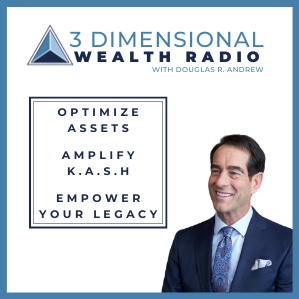What to Do When the Stock Market Goes Down?
FEELING SOME MARKET PANIC? CALM YOUR FUTURE WITH INDEXING & OTHER STRATEGIES
With the COVID-19 pandemic, trying to stay healthy isn’t the only worry on everyone’s mind. It’s the economy. As the business world grinds to a halt with safe social distancing practices, the economic world watches the stock market take hit after hit. Just look at some of the headlines from the first few weeks of the nation’s stay-at-home shift:
“How the DOW’s coronavirus plunge shows investors are fast-forwarding the ‘2008 playbook’” – MarketWatch, Mar. 26, 2020
“’The Market’s in Panic Mode’” – Time Magazine, Mar. 26, 2020
“Market reactions to COVID-19: Stocks end the week in decline” – Marketplace, Apr. 3, 2020
Wherever the stock market is in its yo-yo journey, know this: I want you to be able to transform your approach so you don’t feel the need to follow the market in The Wall Street Journal every day.
There are certain steps you can take to get better control of your future, to avoid being at the whim of the markets, or the things that cause the market to whipsaw like natural disasters and pandemics.
By implementing the right strategies you can avoid panic the next time the market drops. In fact, you might just be patting yourself on the back because you’re not losing money when the market takes another nosedive—you can actually profit from its volatility.
WHEN THE MARKET DROPPED—AND I GOT INTO ACTION
I’ve been a financial strategist for over 45 years, so I’ve seen the damage markets can do to families’ lives and futures. I was responsible for over 3,000 clients in 13 Western states when a huge recession hit in 1980.
It clobbered them.
I’ll never forget hearing how it impacted their lives, aching for them, and deciding I had to find a way to protect people from future losses like this. That’s when I began to research safer financial vehicles and strategies that could protect my clients from market volatility.
They were never happier than when they made the decision to get out of the market.
The same held true after 9/11 when the stock market dropped 40% by the end of 2003, and again in 2008 when the market saw another 40% drop—this time in a single year.
Our clients who were using what I call The LASER Fund, along with indexing strategies we teach, didn’t lose a dime due to market volatility, and many tripled their money—tax free—from 2001 to 2012.
I want to share with you one of the concepts that I’ve employed to enhance my financial strategy.
- Lock in my gains when the market’s up.
- When the market goes down I can reset, not lose any money due to market volatility.
- Start making money again the second the market turns around.
Let me give you a glimpse of how to do that.
THE LASER FUND & INDEXING—A POWERFUL COMBINATION
I utilize a LASER Fund, which is a properly structured, maximum-funded, tax-advantaged universal life insurance policy. And I employ indexing strategies that allow your money to be linked to the market, while not actually in the market.
With this approach, I can typically earn a safe rate of return with strong AAA-rated financial institutions that have weathered the Great Depression: solid insurance conglomerates and companies.
Any time I feel bearish about America, that the economy is going to be rough, I can just hunker down and settle for the insurance company’s General Account Portfolio rate of 3%, 4%, or 5% (historically, some years the GAP has been as high as 8% or 9%).
If I feel bullish about America, that the next year is going to be better, then I can link my returns to my choice of index options. If the market indeed goes up, the value of my LASER Fund goes up. If the market takes an unexpected dive, I am protected by a 0% floor. When this happens, my sons and I always say, “Zero Is the hero” because we didn’t lose a dime due to market volatility.
To illustrate, let’s say Joe Investor had $1 million in IRAs and 401(k)s that were invested in the market.
In 2008 when the stock market dropped 40%, Joe’s account values dropped 40% to $600,000. It took people like Joe until 2012 to get back to a $1 million break-even point with their account values.
As Will Rogers once said, “When things get bad, people are more concerned about the return of their money instead of the return on their money.”
On the other hand, in 2008, I didn’t lose any account value in my LASER Fund. I didn’t see an increase of course, but I didn’t lose any money due to market volatility. Then in the first 90 days of 2009 when the market saw an increase, I was able to lock in a gain of 16%.
Let’s go to the next year. In 2017, many people following what I’m teaching you about LASER Funds and indexing saw 16% gains, some as high as 25%. The following year, the market didn’t fare as well. But even with market losses, their LASER Funds did not lose the 16% to 25% gains they had made the previous year.
BECAUSE YOUR FUTURE IS MORE THAN A GAME
Remember the childhood games of Mother May I and Red Light/Green Light? They apply here.
With traditional retirement vehicles, it’s kind of like playing Mother May I. You can advance when conditions are right (e.g., when the market goes up), but when things change, you have to take a certain number of steps backward (like when the market sends your retirement vehicle values downward). From 2001 to 2010, millions of Americans’ retirement vehicles took steps forward in the up years, but they also had to take devastating steps backward in 2001 – 2003, and again in 2008.
But with indexing, it’s more like playing Red Light/Green Light. Take my experience, for example. By using indexing, I made money (took steps forward) in 2000, 2004, 2005, 2007, 2009, and 2010. In 2001 – 2003, and again in 2008, the market dropped, but my account values were protected from losses with a 0% floor (I didn’t have to take any steps backward). I could stay right where I was, and move forward the next time the market gave me a green light.
By the end of the decade, the Red Light/Green Light strategies empowered me to get much farther ahead than those who were playing Mother May I. The biggest difference was I never had to wait to make up the losses, because my account values never lost a dime to market volatility.
This is the power of indexing. If you’re curious to know more, watch for an upcoming article where I’ll explain the details of exactly how indexing works.
As for right now, you might be thinking: Doug this all sounds great, but what about people like me who don’t currently have a LASER Fund with indexing strategies—instead we have money in the market right now, losing money fast due to market volatility?
I invite you to read a couple of my previous articles that show you why now might be the best time to rethink your thinking so you can: 1) get taxes over with, and 2) perform a strategic rollout to better position your financial future.
Discover your next steps with these quick-read articles on our blog!
Now May Be the Perfect Time to Get Taxes Over With on Your IRA
Want to learn more about some of the concepts in this article? Watch these explainer videos on our YouTube Channel!
What to Do When the Stock Market Goes Down
What Is Better than a Roth, IRA, or 401k?
Is a Roth IRA or 401(k) the best way to save?
How much should I contribute to an IRA or 401(k)?
Are you ready to see the nuts and bolts of a LASER Fund? Get your FREE copy of Doug’s book, The LASER Fund. You’ll learn how to protect your “serious cash” and how to eliminate taxes on your retirement nest egg.
Disclaimer: With any mention of The LASER Fund, maximum-funded tax-advantaged insurance contracts, or related financial vehicles, let it be noted that life insurance policies are not investments and, accordingly, should not be purchased as an investment. The content contained in this post is intended for general informational purposes only and is not meant to constitute legal, tax, accounting or investment advice. You should consult a qualified legal or tax professional regarding your specific situation. Many traditional retirement vehicles involve risk, and the value of your investment will fluctuate over time and you may gain or lose money.


